Rations for Early Weaned Pig
Published: August 25, 2023
By: Ing. Joaquin A. Paulino / Research Professor ISA University
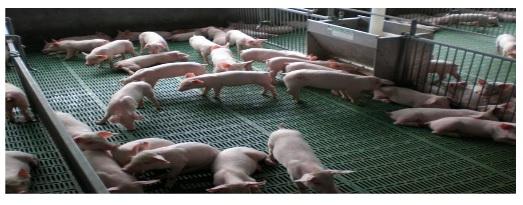
The swine industry has largely gone to early weaning (3 weeks or earlier) especially in confinement production systems with environmentally controlled nurseries. Economic factors such as increasing the number of pig per sow per year and the need to maximize the capital cost of swine farrowing units by moving more sow through the facilities has resulted in this change.
At 3-4 weeks of age, piglets have reached a stage where their digestive system is capable of handling more complex carbohydrates. At this age the piglet's heat regulation system is also beginning to function efficiently, being able to adapt to a reasonable environment.
Composition of the porcine colostrum:
As the only nutritional source for newborn piglets, porcine colostrum and milk contain critical nutritional and immunological components including carbohydrates, lipids, and proteins (immunoglobulins).
- Energy.
- Proteins and amino acids.
- Vitamins and minerals.
- PROTECTIVE FACTORS:
- Cells (lymphocytes, macrophages).
- Antibodies
- Prebiotics (Galactooligosaccharides).
- DIGESTIVE ENZYMES:
- Lipase, amylase
- GROWTH PROMOTERS:
- Epidermal growth factors, insulin, prostaglandins, amines, nucleotides.
Comparison of the nutritional content of pig colostrum and phase 1 feed

Challenges for nutritionists:
- More piglets & less antibiotics.
- Largest litter.
- Low weight at birth.
- Greater nutritional requirements.
- Less use of ingredients of animal origin?? (Possible cross-transfers of virus and resistant bacteria example: African Swine Fever, Swine Influenza, etc)
- Producers, nutritionists and veterinarians are being challenged to produce healthy and certifiable animal-based foods.
- Consumers prefer nutraceutical foods and eat holistically.

The hyperprolific sow has led to an increase in litter size as well as a decrease in individual piglet weights at birth, showing signs of intrauterine growth restriction (IUGR) in piglets.
Intrauterine growth restriction is generally defined as impaired growth during prenatal development, and has a negative effect on postnatal growth and pre-weaning survival.
Piglets subjected to IUGR have higher nutritional demands, in the form of energy per kg/body weight (BW), due to a higher surface area/volume ratio. In addition, these piglets have a smaller stomach at birth due to a lower body weight.
Higher mortality is also associated within the first 24 hours postpartum, so it is essential that these piglets receive additional care and/or nutritional supplements to increase their survival capacity.
Identification of pigs that need to be taught to eat:
o Mental state: alert or depressed.
o Body condition: normal or thin.
o Abdominal form - emaciated.
o Skin - clean vs. blurred appearance.
o Appetite - feeding in the feeder or stacked.
o Signs of dehydration: normal or sunken eyes.

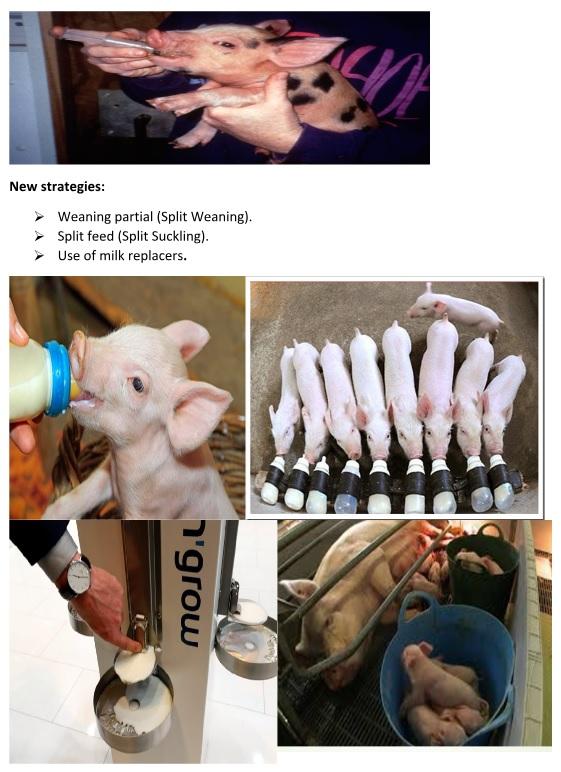
Two essential factors for early weaning are:
1- Utilization of complex high nutrient, high density prestarter diets.
2- Well designed, environmentally controlled nurseries.
Phased feeding:
Nutritional requirements for early weaned pig change rapidly during the early post weaning period. A phased feeding program is essential to minimize the post weaning lag problem and to get pigs started on grain-soybean meal diet as quickly as possible. Complex diets as described in table 3 and 4 are need to achieve maximum feed intake and gain during the post weaning period.
The goal of the nutritional program remains the same regardless of the number of diet phases used. That goal is to transition pigs to a low-cost, grain-soybean meal -based diets as quickly as possible after weaning without sacrificing growth performance. In most cases, pigs achieve this goal without higher-cost products such as whey, plasma protein or fish meal.
A four phase feeding approach replaced the traditional, three-phase system in the nursery phase when younger weaning ages were implemented in multi-site pig production.
With later weaning, many producers are reevaluating feed budgets or reverting back to the three-phase (See table 1 and 2).
The concept of matching the digestive capacity of the pig to the ingredient's use in the rations should not charge.
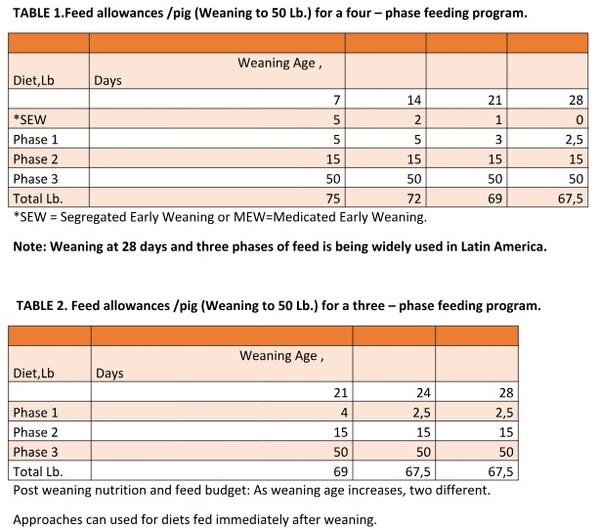
A producer may provide 0.5 or 1 lb. of a sew diet/pig and 1 to 3 lb. of a phase 1.
Nutrition and feed budget until 25 lb. these diets are typically a grain- soybean meal-based diet with 10 to 20 % of high quality source of lactose and a small amount of especially protein source, such as spray-dried blood meal, plasma protein or high quality fish meal.
Other speciality protein sources may be used, depending on economic considerations or location for example potato protein, extruder or micronized soybean meal, dehydrated egg and hydrolysates (DPS), Soy protein 63%.
Alternative ingredients:
Animal protein is a feed ingredient of high quality and easily digestible, which is used as a supplement to diets for young animals. However, over the years, alternatives derived from plants have emerged that lead to similar performance results and with lower risks of contamination and pathogen transfers.
With a soy protein 65 percent protein currently we can replace animal plasma, blood meal and fishmeal in pre-starters of piglets and chickens, obtaining similar results and even dairy whey can be replaced by cane and soy molasses (Using an equivalent sucrose to lactose) to make a 100% vegetable diet.
Vegetable proteins are cheaper and safer, but they have lower digestibility than that of animal origin; strategies to improve their digestibility must be used, such as applying an enzymatic mixture (Proteases, Amylases, phytases, Xylanases, Lipase, Beta-glucanases, mannanases) to reduce undigested fraction that is a food for the multiplication of pathogenic bacteria.
Another strategy is to formulate diets with minimal levels of protein and to help intestinal health use organic acids, phytogenic, probiotic, enzyme blend.
Anti-nutritional factors of vegetable proteins:
• Stachyose
• Raffinose
• Verbascose
• Ajucose
• Trypsin inhibitors (The hidden enemy)
• Glycine
• Beta-Conglycine
• Lectins
• Saponins
• Fied phytic acids
• Biogenic amines
• Glico alkaloids
Note: The anti-nutritional factors can be thermolabile and thermostable.
- Trypsin inhibitor maximum 4.0 UTI/mg MS.
- Reactive lysine? H. raw soybeans, superheated.
- Mycotoxin levels.
- Challenges in piglet nutrition:
- More piglets & less antibiotics.
- Largest litter.
- Low weight at birth.
- Greater nutritional requirements.
- Less use of ingredients of animal origin? (Possible cross-transfers of Virus and resistant bacteria example: African swine fever, Swine Influenza, etc.)
- Producers, nutritionists and veterinarians are being challenged to produce healthy and certifiable animal-based foods.
- Consumers prefer nutraceutical foods and eat holistically.
Alternative ingredients:
1- Micronized whole soybean meal.
2- Fermented soybean meal.
3- Corn and precooked sorghum.
4- Gluten of corn and wheat.
5- Molasses cane powder.
6- Molasses soy powder.
7- Egg powder.
8- Soy protein.
9- Potato protein.
0- Nucleotides.
Growth promoting antibiotics, acidifying, artificial flavoring, probiotics and zinc oxide are typically used in these diets. Research indicates that 2000 ppm zinc is the optimal inclusion level.
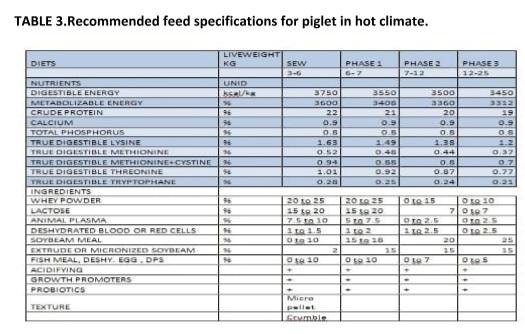
Ideal protein profile:
Standardized Ileal Digestibility
TODAY IN FEED FORMULATIONS THE TERM IDEAL PROFILE OF AMINO ACID UNIVERSALLY UNDERSTOOD AND USED TO DESCRIBE THE OPTIMUM PATTERN OF AMINO ESSENTIAL ACIDS THAT MEETS THE REQUIREMENTS OF MAINTENANCE, GROWTH AND PRODUCTION OF ANIMALS.
Pigs and birds have requirements for the correct amounts of individual amino acids, not necessarily for the crude protein, therefore, the amounts of specific amino acids must be provided, due to the wide range of possible ingredients, the “crude protein” is not correlated with essential amino acids as in previous years
Factors that influence the requirements of AAs:
- Genetics
- Energy content (Lysine: Proportion of calories)
- Response criteria (GDP vs CA).
- Stress and diseases
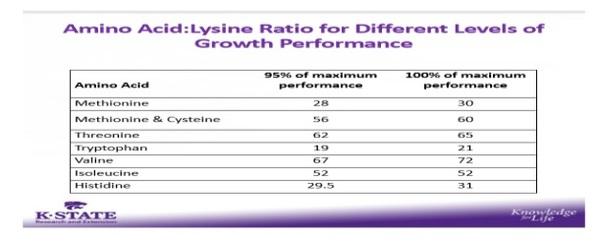
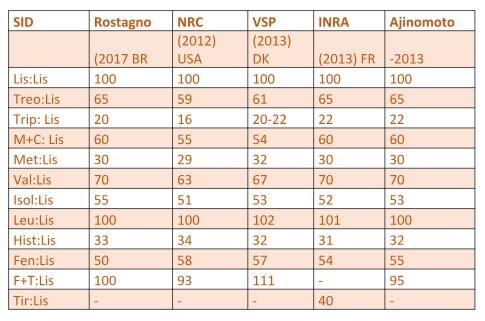
Precision Nutrition:
Nonlinear formulation. In other words, the challenge is no longer to formulate the ration with the lowest cost, but the one that brings the greatest economic return to the business, Return on Investment (ROI).
Online formulation in real time.
NIR (Near Infrared Spectroscopy) Multi Online Analyzer MYRG – 1 spectrometer for up to 6 measuring points.
Information of zotechnic parameters in real time.
Mathematical model for predicting growth and nutrient requirements. Dra.Nilva Kazue Sakomura – UNESP, Brazil, NRC, 2012.
Nutrición de precisión:
Formulación no lineal. Es decir, el desafío ya no es formular la ración con menor costo, sino la que trae al negocio el mayor retorno económico Return on Investment (ROI).
Formulación en línea en tiempo real.
NIR (Near Infrared Spectroscopy) Multi Online Analyzer MYRG – 1 spectrometer for up to 6 measuring points.
Information de parametros zotecnicos en tiempo real.
Modelo matemático de predicción de crecimiento y requerimientos de nutrientes. Dra.Nilva Kazue Sakomura – UNESP,Brasil, NRC, 2012.
Modern formulation for a modern piglet:
Maximum Digestible Lysine Levels.
Net Energy to the max.
Reduce protein with industrial amino acids.
OVN Vitamin and mineral levels.
Calcium and Digestible Phosphorus levels correct.
Balance the phytase with its complete matrix.
Include on top at the recommended dose:
1- Protease
2- Amylase
3- Xilanase
4- Beta-Glucanase
5- Mannanase
6- Lipase
7- α-galactosidase
8- β-galactosidase
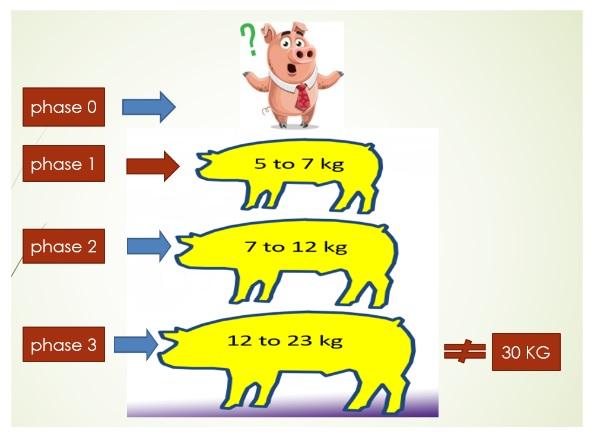
Weaning feed phases:
1. Rapid change in digestive capacity.
2. Rapid change in nutrient requirements.
3. The goal is to make piglets go on grain and soybean diets as soon as possible after weaning without sacrificing growth.
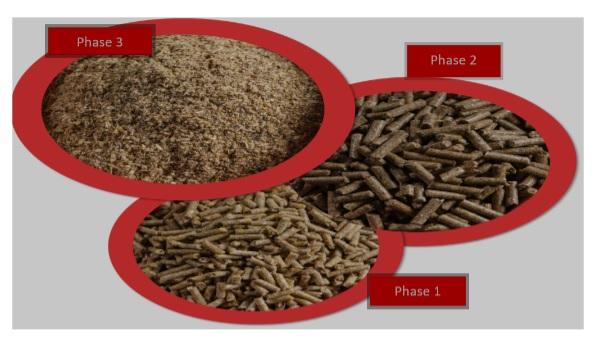
Nutrition and feed budget from 12 to 25 kg: this diet should resemble a grow-finish diet, which in most cases will be a simple grain-soybean meal diet without any specialty protein products or lactose sources. The digestive capacity of the at this weight is such that these ingredients are unwarranted; including them will increase feed cost /pig.

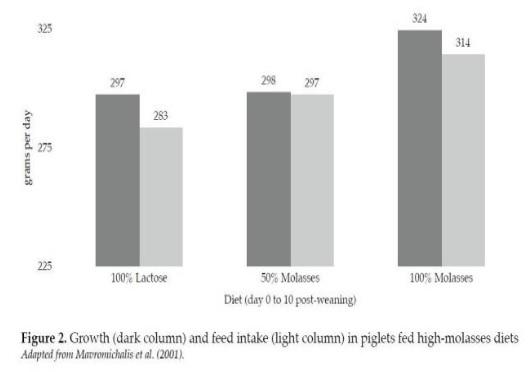
EFFECTS OF EXOGENOUS ENZYMES:
- They reduce the effects of antinutritional factors.
- Improve nutrient digestibility
- Increase the value of energy.
- Modulate the microbial ecosystem by creating or releasing prebiotics(mannan oligosaccharides MOS)
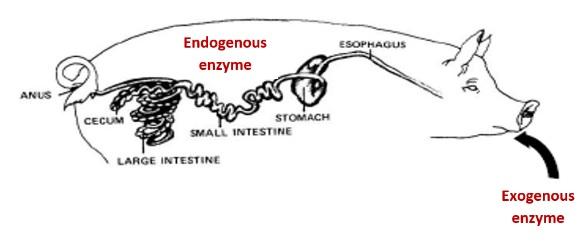
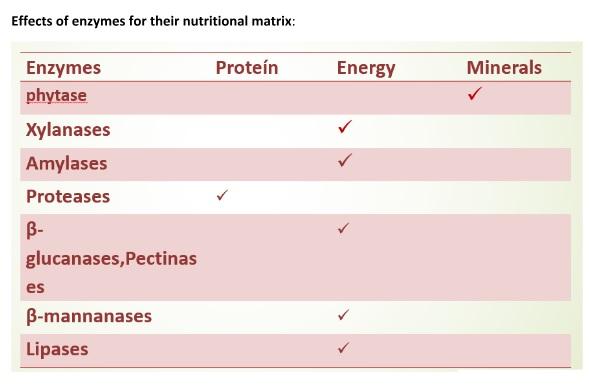
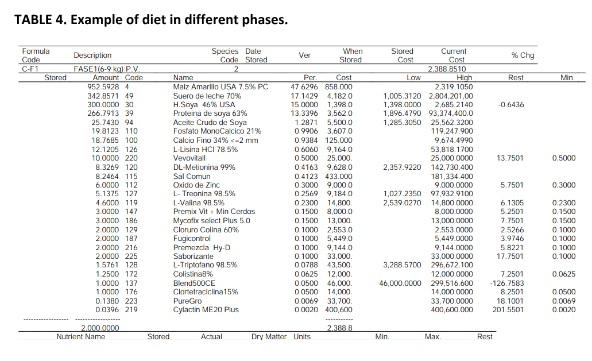
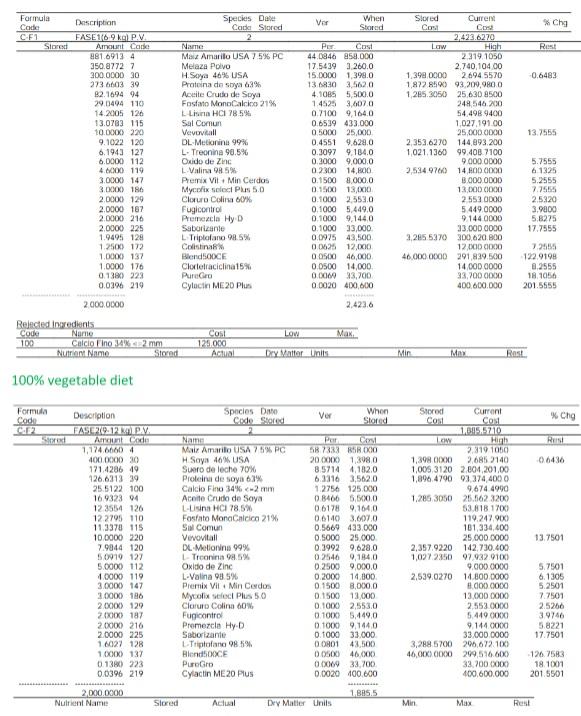
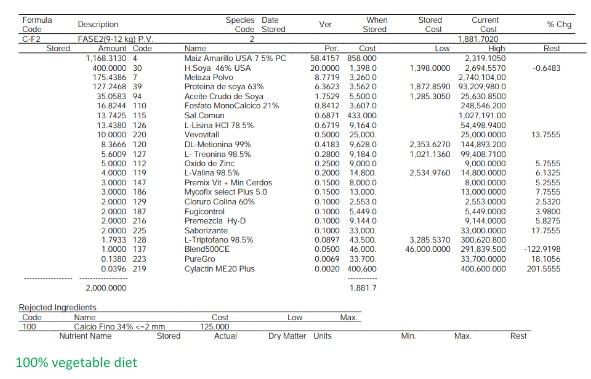
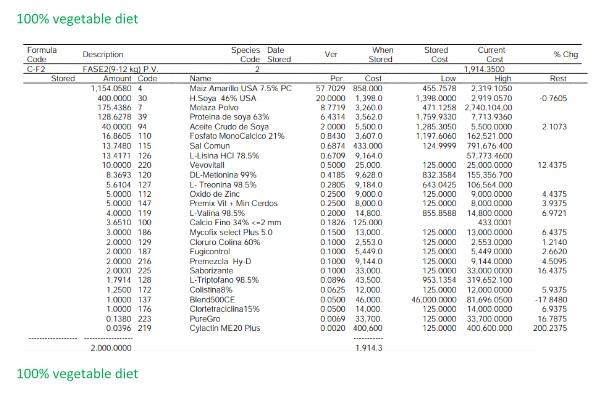
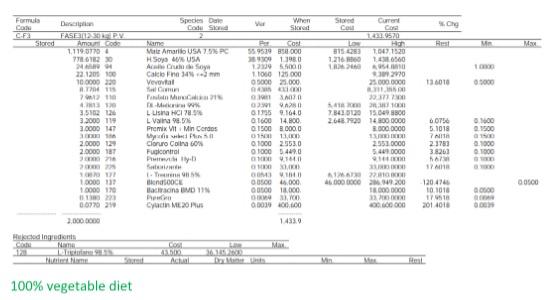

Note:
Many well-technified farms in Latin America are achieving a level 3
When designing diets for piglets must be careful in using highly digestible ingredients such as whey, animal plasma, blood meal, and fish meal with minimum allergic effects in piglets, levels of soybean meal should be appropriate, it contains anti-nutritional factors such as glycinin and beta- conglycinin causing nutritional diarrhea, flavors, acidifying, probiotics, growth promoters and Zinc oxide should be added to these diets. Other ingredients may be used if cost permits for example: Dried egg protein, potato protein, and hydrolysates (DPS).
- Challenging genetic potential:
- Redesign nutrition and performance.
- Exceed the recommendations of the genetic houses.

Related topics:
Authors:
Universidad ISA (Instituto Superior de Agricultura)
Recommend
Comment
Share
Engormix
29 de agosto de 2023
Please feel free to leave your questions or comments here for the author, Joaquin Armando Paulino Paniagua, who will answer them as soon as he can.
Recommend
Reply

Would you like to discuss another topic? Create a new post to engage with experts in the community.







.jpg&w=3840&q=75)